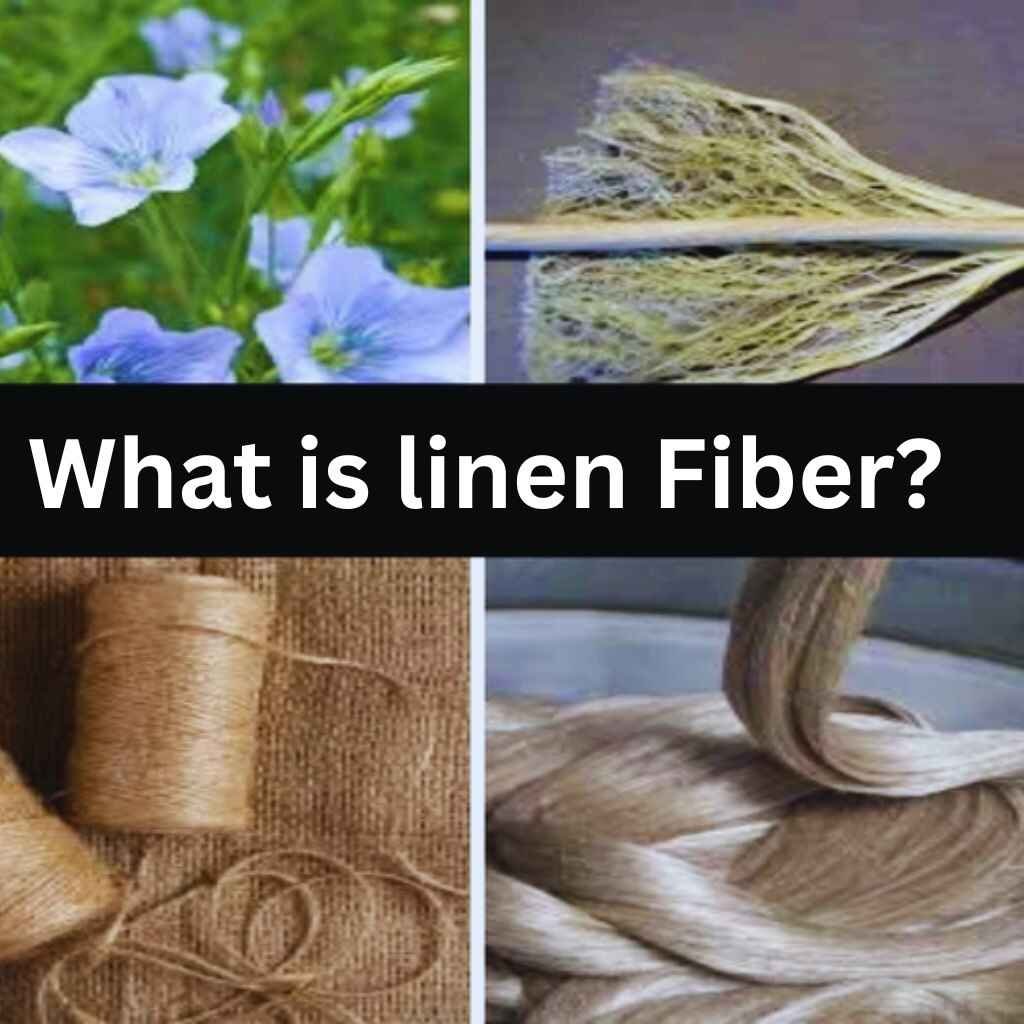People have used natural fibers for thousands of years for clothing, textiles, and other products that provide ecological security Fibers can be obtained from plants, animals, and minerals. Another common characteristic of these substances is that they serve as an excellent filling material unlike the synthetic fibers which have contributed heavily to pollution. This article aims at discussing the various types of natural fiber and their associated benefits as well as downsides.
Table of contents
- Introduction to Natural Fibers
- What is the Definition of Natural Fibres?
- Types of Plant-Based Natural Fibres
- Animal-Based Natural Fibres
- Mineral-Based Natural Fibers
- Natural Fibers and Their Comparison with Synthetic Fibers
- Advantages of Natural Fibers
- Disadvantages of Natural Fibers
- The Future of Natural Fibers
- Conclusion
- FAQs
Introduction to Natural Fibers
Natural fibers originate from plants or animals and can be manufactured into yarn or thread. These fibers are very important to people since they are used in making clothes, people a ropes and even industrial purposes. In contrast to synthetic fibers, the natural fiber are compostable, recyclable and regrow easily, and most of the time, they consume less processing chemicals.In the present times when sustainability has been a factored in almost all concerns, the interest for natural fiber has been on the rise because of their natural advantages as well as their adaptability.
What is the Definition of Natural Fibres?
The definition of natural fibres is that they are materials originating from plants, animals or earth materials that can be made into threads and then fabrics. This type of fibres can be classified as:
- Plant-fibres
- Animal-fibres
- Mineral fibres
Every fibre type has its advantages, purposes and means of production which we will look into further down this article.
Types of Plant-Based Natural Fibres
Cotton: The Most Popular Among Natural Fibres
Cotton is the most commercially exploited plant fibre, which is grown in cotton plants. This fibre is appreciated for its softness, coolness and moisture retention properties. This is because cotton has a big utility in the making of garments, bed linen, and towels among other items, since it is comfortable and easy to maintain .
Pros
- Soft
- absorbent
- breathablea
- hypoallergenic
Cons
- Requires large amounts of water to grow
- prone to shrinking
Linen: Terror of All Clothing Fabrics
Linen clothes come from fibers extracted from the flax plant. People consider it one of the oldest fabrics in the world, and they generally view it as a strong, durable, and moisture-absorbing fabric. Linen fabric is light, cool and comfortable which makes it suitable for hot weather.
Pros
- Strong
- durable
- skin-friendly fabrics which wick moisture away.
Cons
- Crease very easily
- pricey.

Hemp: Eco-Friendly and Flexible.
The plant yields a lot and uses little water and no chemist’s tools, making hemp a great eco-friendly crop. However, the strength of hemp fibers is often more than that found in cotton, they are resistant to fungus and are resistant to UV light. Hemp is used extensively from growing paper to clothes down to its construction uses.
Pros
Environmental friendly
strength,
mold resistant
multipurpose.
Cons
Unpleasant texture
limited in certain areas.
Jute: Low Cost and Conservational.
Jute is also called burlap and is a strong coarse food of jute plant. It is used for bags, ropes, and rugs. Jute fiber is natural and inexpensive and can decompose, so it is not a good environment for chemicals.
Pros
Cheaper
biodegradable
strong.
Cons
High coarseness
Not for fine fabrics.
Bamboo: The latest requirement of the masses.
Bamboo fibers come from the stalks of bamboo plant species. In addition, bamboo fabrics are considered to be hypoallergenic and very smooth making them a well accepted ‘green’ fabric in the fashion industry. It is also an anti-bacterial and moisture-wicking fabric which is appropriate for children’s clothes as well as sportswear.
Pros
Comfortable
anti-bacterial
moisture management
ecological
Cons
Processing may be chemical intensive
expensive
Animal-Based Natural Fibres
Wool: Insulating and Water Repelling
Most people know that wool is taken from sheep coat, and that it is one of the warmest materials woven from the wool of animals. It is also noticeable that wool fibers hold to a good amount of air which keeps warm, and they tend to be water resistant. Further, wool fibers are more often used in textiles, insulating, and carpeting than anything else.
Pros
- Warmth
- moisture repellent
- very strong
Cons
- May cause irritation
- may shrink
- needs a lot of care
Silk: Beautiful and Weightless
Silk is an animal protein fiber spun by silk-producing larvae (silkworms). People regard it as one of the most luxurious fibers because of its soft texture, shininess, and strength. The haute couture industry and home textiles mostly use silk.
Pros
Beautiful
light
and most importantly
durable
Cons
Pricey silk
delicate pieces and need to be handled with care
and wrinkle easily
Cashmere: Delicate and Elegant
Fleece is derived from the soft inner coat of cashmere goats and is known to provide excellent warmth and softness. Mohair fabrics are extremely soothing on the skin and are also very effective in maintaining warmth.
Pros
Soft
light
feels warm
Cons
High cost
brittle
special treatment is needed
Alpaca: Insulating – Soft – Hypoallergenic
Alpaca fiber comes from the fleece of an alpaca which is endemic to South America. It is warmer but lighter than wool fiber and is also naturally hypoallergenic. There are various articles of clothing made from alpaca fibers, including scarves, wraps, and sweaters.
Pros
Keeps warm
less heavy
doesn’t irritate the skin
Cons
Costs a lot
less elastic than wool
Alpaca: Insulating – Soft – Hypoallergenic
Alpaca fiber, which is wool from an alpaca’s fleece, is domestic to South America. Besides, it is warmer but lighter than wool fiber and is still chemically friendly to the skin. In addition, many attires such as scarfs, wraps, and sweaters are manufactured from the alpaca fiber.
Pros
Keeps warm
less heavy
doesn’t irritate the skin
Cons
Costs a lot
less elastic than wool
Mineral-Based Natural Fibers
Asbestos: A Fiber From the Ground
Asbestos is a naturally occurring mineral widely recognized for its heat-resistant composition, which served as insulation in the past. However, people now limit its usage due to its association with various health hazards, including lung cancer and asbestosis.
Pros
Resists fire
durable
Cons
Highly poisonous
outlawed in most countries
Natural Fibers and Their Comparison with Synthetic Fibers
Natural fibers have well-marked green attributes, quite unlike synthetic fibers such as polyester and nylon which have their unique strength in terms of endurance and adaptive strength. However, synthetic fibers are made from petrochemical materials which are non-biodegradable contributing towards environmental pollution.
Advantages of Natural Fibers
Natural fibers are a popular alternative for many people due to their unlimited advantages most especially during this period where sustainability is so ideal.
Eco-Friendly: Disposal of anything that is made up of natural fiber is not a problem as it will decompose naturally in the soil.
Renewable: This is achievable as these materials are plant and animal materials.
Breathability: Most of these natural fiber are porous and this leads to comfort in the hot weather.
Absorbent: Fibers like cotton and wool have the ability to absorb moisture which helps in maintaining comfort ways regardless of weather
Disadvantages of Natural Fibers
In addition, natural fibers also display some negative aspects which need to be assessed although they may be beneficial.
Cost: When compared with the cost of synthetic forms of foams, some natural hair fibers are expensive, for example, silk and cashmere.
Durability: Most natural hair fibers do not last as long as synthetic hair fibers and when used in adverse weather conditions finish quicker.
Care Requirements: Natural fiber tend to be quite delicate and require special attention including hand washing or professional treatment.
The Future of Natural Fibers
Lastly, the outlook for natural fibers in the near future is quite bright, especially with the rising trend of people being more conscious about environmental matters. A number of companies have been pushing a lot of resources toward the creation of natural fibers and development of other eco-friendly methods of processing fabrics. Further, the employment of technology in the manufacturing and handling of natural fibers is minimizing negative impact on the savanna, making these products more appealing to the sustainability seeking market.
Conclusion
Natural fibers are not the latest fashion statement but rather a new wave of an old practice that is nature-friendly. They come in different forms mainly from plants like cotton or hemp to animal hair such as cashmere and silk, appropriate for textile, fashion and other industrial uses. All these materials can be expensive and require some maintenance attention, however the benefits for the environment are much bigger. And, as more people choose sustainability, it is obvious, that natural fibers will remain essential in designing a more sustainable world.
FAQs
Among the most natural fibers which are used across the globe cotton hemp wool silk and linen are worth mentioning.
Biodegradable synthetic cost-effective fibrous raw materials require less energy or toxic chemicals during the production.
Natural fibers can be costly, usually have shorter lives than synthetic fibers, and most of the time need special attention to their care.


